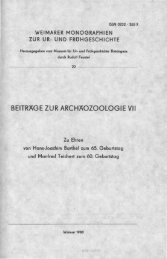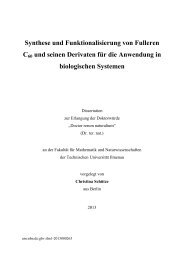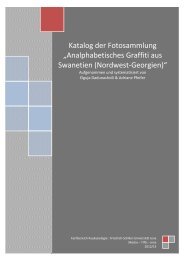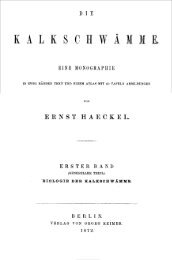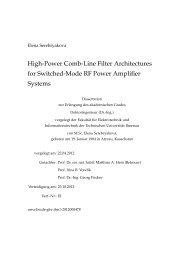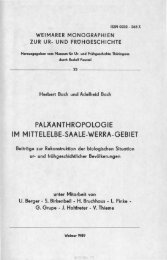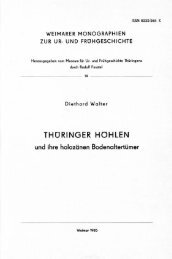Dissertation
Dissertation
Dissertation
Create successful ePaper yourself
Turn your PDF publications into a flip-book with our unique Google optimized e-Paper software.
|3.3 NN-NHC-Ligand bbip: Toward Second Generation Catalysts|<br />
In addition to the preparation of the palladium complex, the silver precursor was used to<br />
synthesize a rhodium-NHC-complex [(tbbpy) 2 Ru(µ-bbip)Rh(cod)Cl] 2+<br />
(Ru(bbip)Rh) using<br />
[Rh(cod)Cl] 2 (COD = 1,5-cyclooctadiene) for the transmetalation reaction. Similar work-up gave<br />
a red solid compound which was characterized by NMR- and MS-methods. In this case all CH 2 -<br />
signals of the benzyl group are shifted with respect to the asymmetric NHC-bound {Rh(cod)Cl}-<br />
metal fragment so that all four protons give independent signals with the characteristic 2 J-coupling<br />
to the respective geminal proton (δ Ru(bbip)Rh<br />
CH 2<br />
(d, 1H, 2 J = 20 Hz) and δ Ru(bbip)Rh<br />
CH 2 ”<br />
= 7.20 ppm (d, 1H, 2 J = 20 Hz), δ Ru(bbip)Rh<br />
CH 2 ’<br />
= 6.75 ppm<br />
= 7.05 ppm (d, 1H, 2 J = 20 Hz), δ Ru(bbip)Rh<br />
CH 2 ”’<br />
= 6.95 ppm (d, 1H,<br />
2<br />
J = 20 Hz), see figure 95) in contrast to the silver complex (δ Ru(bbip)Ag<br />
CH 2<br />
= 6.50 ppm, (s, 4H)).<br />
Additionally, it was possible to identify the COD-related signals which further supported the<br />
formation of the desired compounds.<br />
Mass spectrometric analysis revealed the characteristic pattern (for details see figure 97)<br />
which correspond to the calculated isotopic patterns for the expected binuclear complex<br />
Ru(bbip)Rh. Furthermore, unexpected peaks which refer to AgCl-adducts and Rh(cod)Cladducts<br />
of Ru(bbip)Rh were found. It was concluded that undesired soluble [AgCl 2 ] − or higher<br />
AgCl-cluster counter ions which did not precipitate from the solution were still present in the<br />
product, which is a common problem in transmetalation reactions with formation of silver<br />
halogenides. [188, 191] Unfortunately, it was not possible to remove the impurities from the mixture<br />
by further work up steps such as dissolving the complex in dichloromethane and reprecipitation<br />
with diethyl ether. Counter ion exchange with a [PF 6 ]-salt did not succeed.<br />
3.3.8 Spectroscopic Characterization<br />
For the series of this new ruthenium chromophores photophysical properties were determined.<br />
Special interest was placed on the influence of the electronic transformations at the imidazole<br />
moiety in the N,N’-coordinated ruthenium complexes with the new ip-type ligands. Preliminary<br />
insights were derived from steady-state absorption and emission studies in dichloromethane and<br />
acetonitrile (see figures 98 and 99, compare table 14 on page 143).<br />
At first glance, all described complexes show the typical broad 1 MLCT absorption between 400<br />
and 500 nm which give rise to similar 3 MLCT emission in the 550 to 800 nm range (for an example<br />
see figure 98). [36] Upon closer analysis, however, subtle changes become visible as the ligand<br />
|138|



